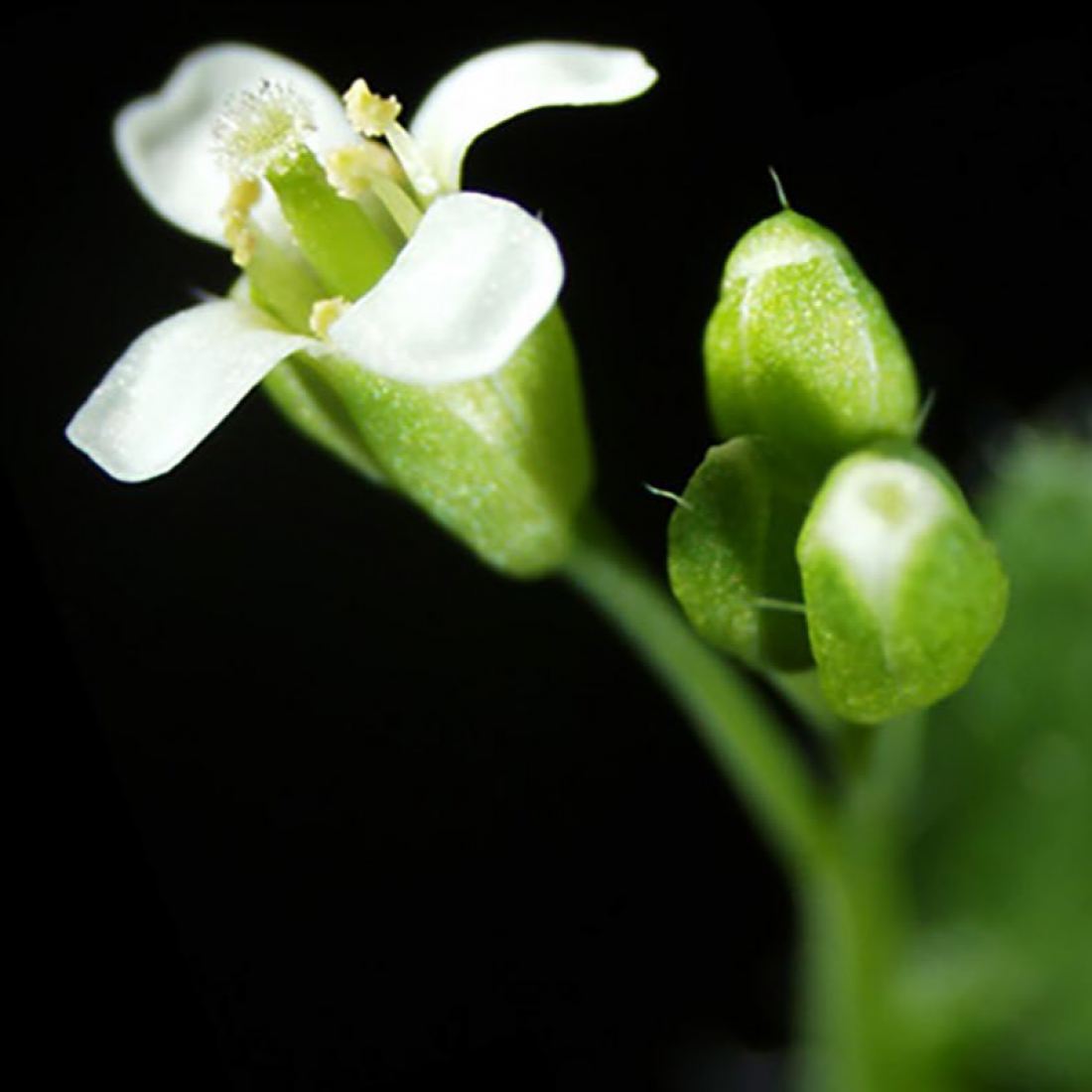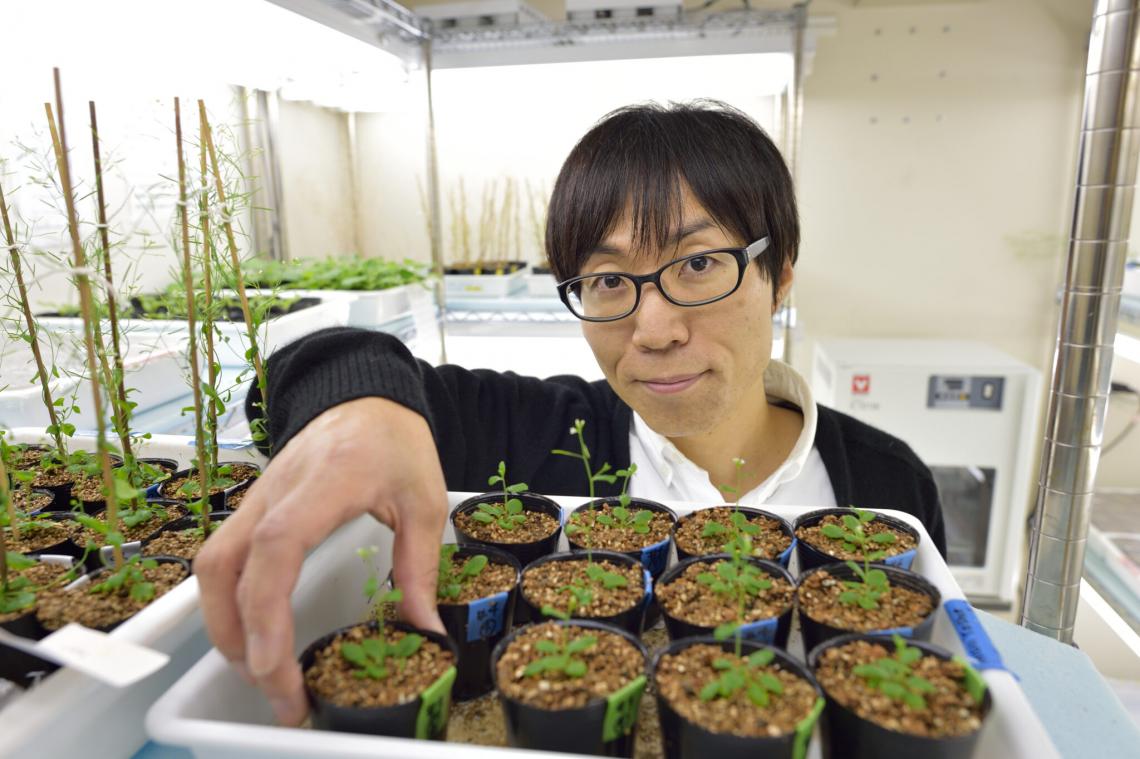This story is featured in the Asia Research News 2022 magazine. If you would like to receive regular research news, join our growing community.
Get the news in your inbox
Nitrogen is one of the three macronutrients required for plants to grow and develop, along with phosphorus and potassium. Nitrogen-rich conditions induce plant growth, particularly stems and leaves, while delaying flowering. In some plants, low nitrogen conditions lead to a change from growth mode to reproductive mode, accelerating flowering. However, the molecular mechanisms that regulate flowering under these conditions are not known.
A team of scientists, led by Hokkaido University plant physiologist Takeo Sato, has revealed the molecular mechanism responsible for accelerating flowering in the Arabidopsis plant under low nitrogen conditions. Their findings were published in the journal PNAS.
Takeo Sato, with Arabidopsis plants in the culture room.
Arabidopsis is often used to study plant biology and scientists have been able to compile an extensive database of its protein expression. In the current study, the team identified a set of proteins that are activated when nitrogen levels change. One of these was the gene regulator FLOWERING BHLH 4 (FBH4). The scientists conducted experiments using FBH4-deficient plants and confirmed the protein was responsible for accelerated flowering under low-nitrogen conditions.
Further investigation suggested that FBH4 is extensively phosphorylated by another protein called SnRK1. Low-nitrogen conditions suppress SnRK1 activity, which in turn results in FBH4 dephosphorylation. The dephosphorylated FBH4 moves to the nucleus to activate genes responsible for flowering. It is also responsible for controlling the expression of other genes vital for plant survival under low nitrogen conditions, particularly those related to nitrogen recycling and remobilization.
The scientists conclude that inadequate nitrogen conditions appear to trigger FBH4 use by Arabidopsis plants to precisely control genes related to developmental and metabolic processes required for flowering. “The FBH family of genes is present in major crop plants. Manipulating their activities might be an effective way to control when crops flower and thus sustainably enhance agricultural production,” says Sato.
Further information
Assoc Prof Takeo Sato
[email protected]
Graduate School of Life Science
Hokkaido University
Sohail Keegan Pinto
[email protected]
Public Relations Division
Hokkaido University
We welcome you to reproduce articles in Asia Research News 2022 provided appropriate credit is given to Asia Research News and the research institutions featured.





